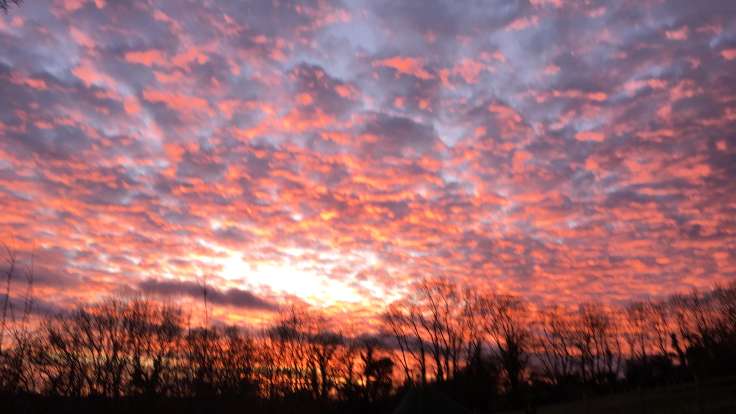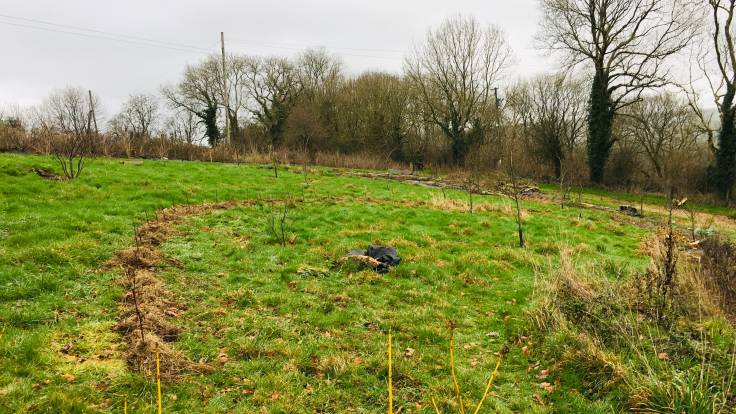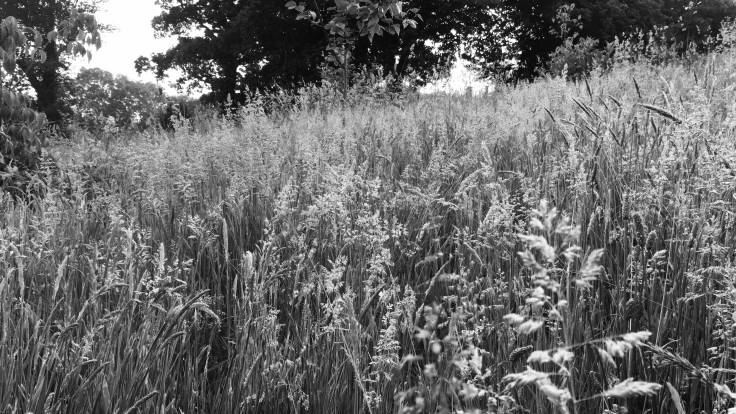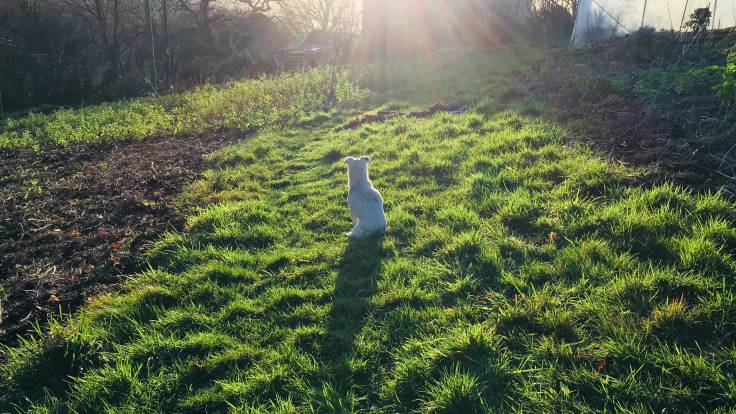
The most amazing sunset, fleeting and dramatic, this week over the Ornamental Forest Garden
A small garden web log about the middle of winter in the forest garden
Looking forward to the spring, I’m running our first forest garden tours and workshops. It is quite a daunting prospect and actually a really good incentive to put imaginatively named Forest Garden One into some sort of public order. There’s still a lot of sheet mulch down on the Farside, which I want to take up and get some sort of ground cover down. We have Minty Corner, so called because it is a corner. And it is planted with mint. The corner bit is important, I don’t want the mint to spread and a mow will stop mint in its tracks. And then I’d like to have an area called Strawberry Fields, with a ground cover of, well, strawberries.
The other job is to improve the windbreaks. In my Creating a forest garden in 8 easy steps, number 4 in the grand order of things is windbreaks. I wish sometimes I would listen to my future self, though that may be asking too much. Windbreaks are important, which is why they are in bold and why they are in a list of important things. Windbreaks help your plants grow, and being on a windy west Wales hillside, this protection is greatly appreciated. Many of the trees have a noticeable slant and a paucity of branches on the windward side.

Tiny shoots of Cornus sericea, willing to form a windbreak hedge
So, better late than never, I have finally followed my own advice and planted hardwood cuttings, a Red Dogwood (Cornus sericea) hedge. I say hedge, I mean row of sticks ⅔ in the ground. But I am a gardener and I am by nature optimistic with a stubborn personality and it will be a windbreak hedge.
The beauty of creating a hedge, apart from the protection it will give the Sweet Chestnut (Castanea sativa ‘Numbo’) and the Crab Apple ‘John Downie’, is that it magically creates more beds. I’ll be sheet mulching the sunny area south of the hedge and planting it with Apple Mint (Mentha suaveolens) on one side of the uphill snaking path and possibly Oregano (Origanum vulgare) on the other. To the north of the hedge, I’ll leave it as a Makeshift Meadow for now, which is always useful for wildlife habitat and for creating hay mulch. When the Sweet Chestnut gets to a decent size, the grass will start to die back, and I’ll have a think of what else to plant. But that’s a decision for a few years time.

The Makeshift Meadow in full bloom last year
It really feels as though the forest garden is starting to take shape, even though there’s much sheet mulch to pull up and much sheet mulch to lay down. One of my favourite jobs is to peg out areas with short lengths of bamboo to see how paths and areas could look, and then run a full wheelbarrow past them to check for widths. When I’m happy, I’ll mark it out with a length of white string and live with it for a while before mulching.
The final word, or rather photo, goes to Ronnie Barker, the @ForestGdnDog, enjoying the unusually clement weather for the time of year.

Ronnie Barker, basking whilst keeping guard